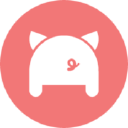We Built Our App From The Back Of A Bus And Grew It To 10,000 Users
Hello! Who are you and what business did you start?
Hello! I am Danielle, a digital nomad and indie maker. I am originally from the UK, but for the past 3 years I have been traveling full-time with my partner, best friend, and fellow developer James. We founded our web development agency Squarecat together while on the road and we occasionally freelance, but our main focus is on our flagship product Leave Me Alone - a service to easily unsubscribe from unwanted emails.
Leave Me Alone is super simple to use, just connect all of your email accounts to see all of your subscription emails in one place, and start opting out with a single click!
Leave Me Alone is for anybody with almost any email account who wants to clear out the unwanted noise from their inbox. You could have thousands of unread emails, be striving for inbox zero, or somewhere in between, recurring emails can be a real drain on your time! There’s no easy way to view only the subscriptions and newsletters in your inbox and be able to decide which ones are worth keeping, using Leave Me Alone makes this a breeze!
We are proud to be an

Download the report and join our email newsletter packed with business ideas and money-making opportunities, backed by real-life case studies.

Download the report and join our email newsletter packed with business ideas and money-making opportunities, backed by real-life case studies.

Download the report and join our email newsletter packed with business ideas and money-making opportunities, backed by real-life case studies.

Download the report and join our email newsletter packed with business ideas and money-making opportunities, backed by real-life case studies.

Download the report and join our email newsletter packed with business ideas and money-making opportunities, backed by real-life case studies.

Download the report and join our email newsletter packed with business ideas and money-making opportunities, backed by real-life case studies.

Download the report and join our email newsletter packed with business ideas and money-making opportunities, backed by real-life case studies.

Download the report and join our email newsletter packed with business ideas and money-making opportunities, backed by real-life case studies.




































